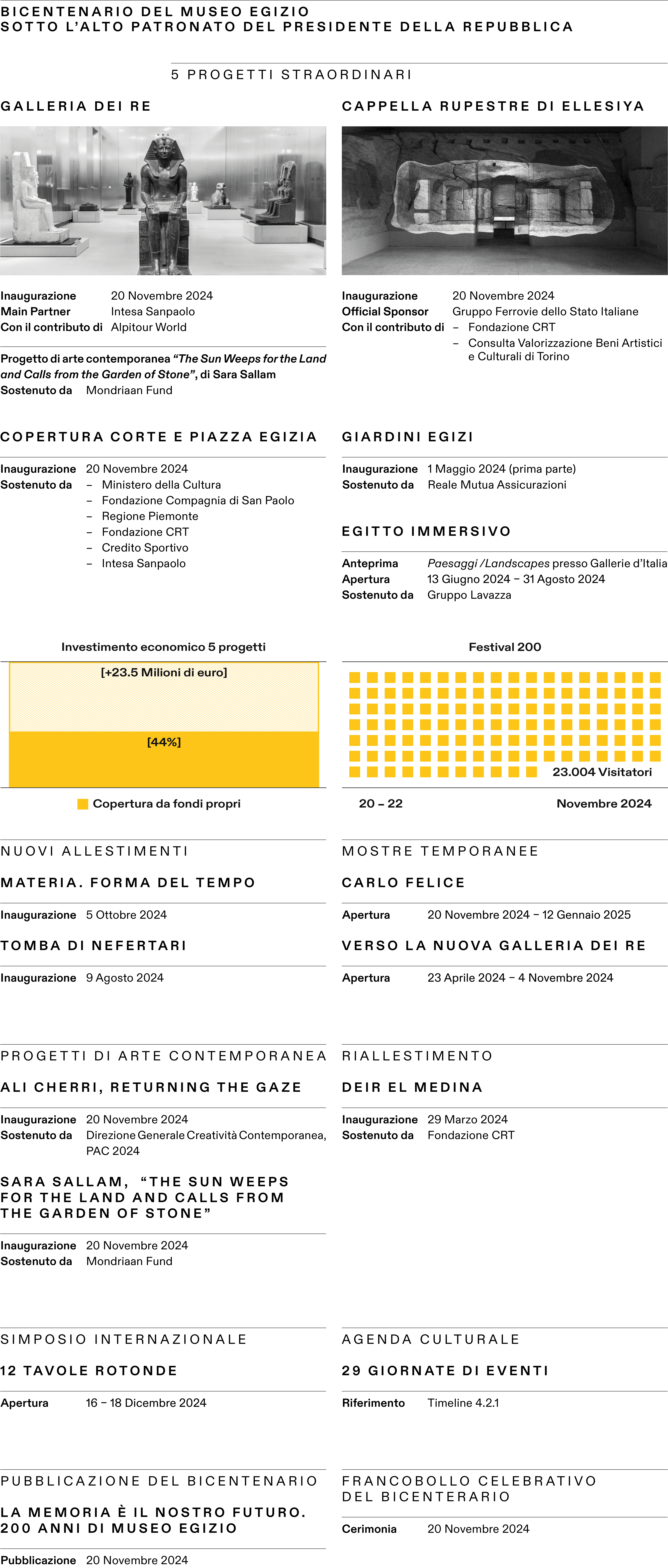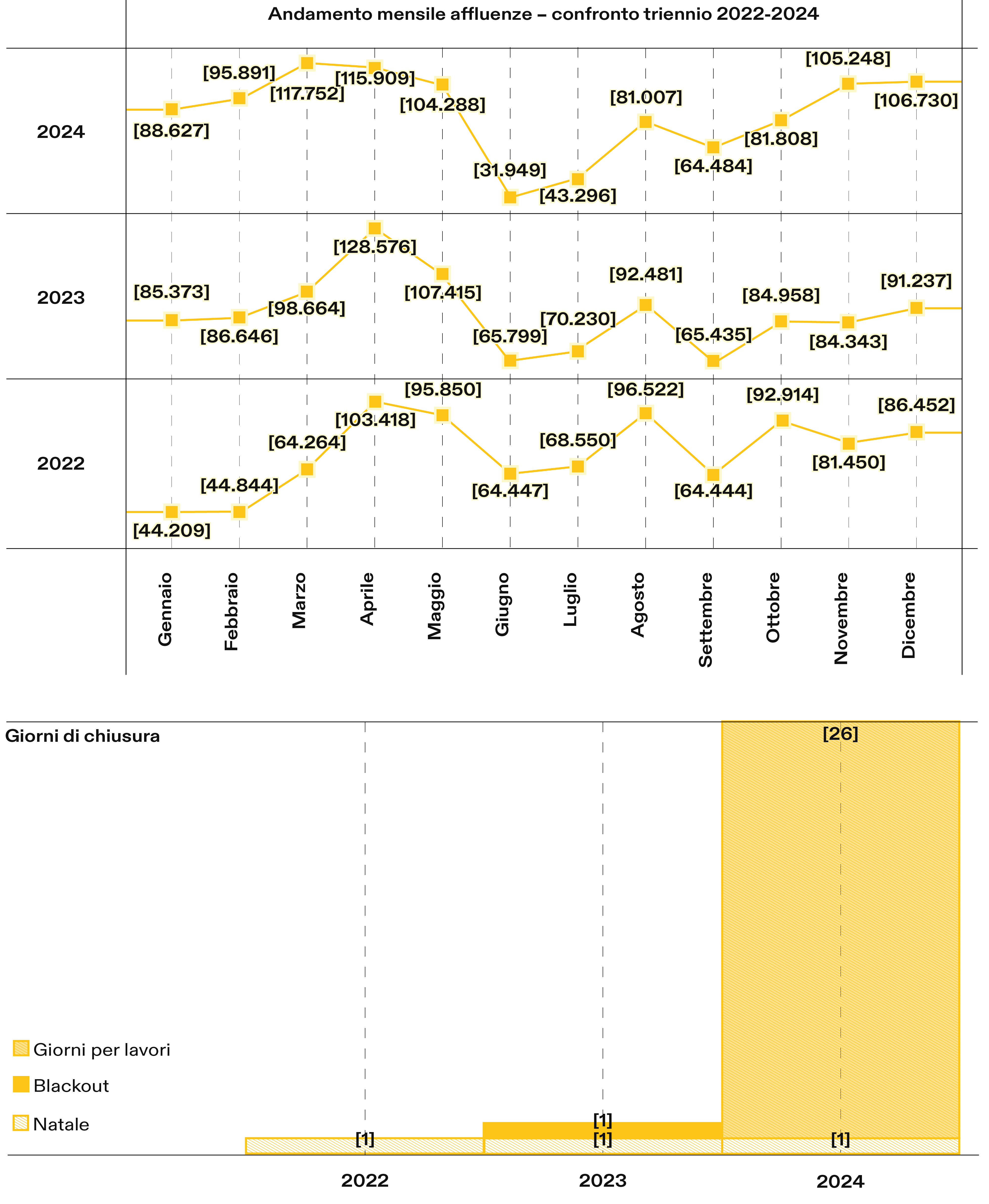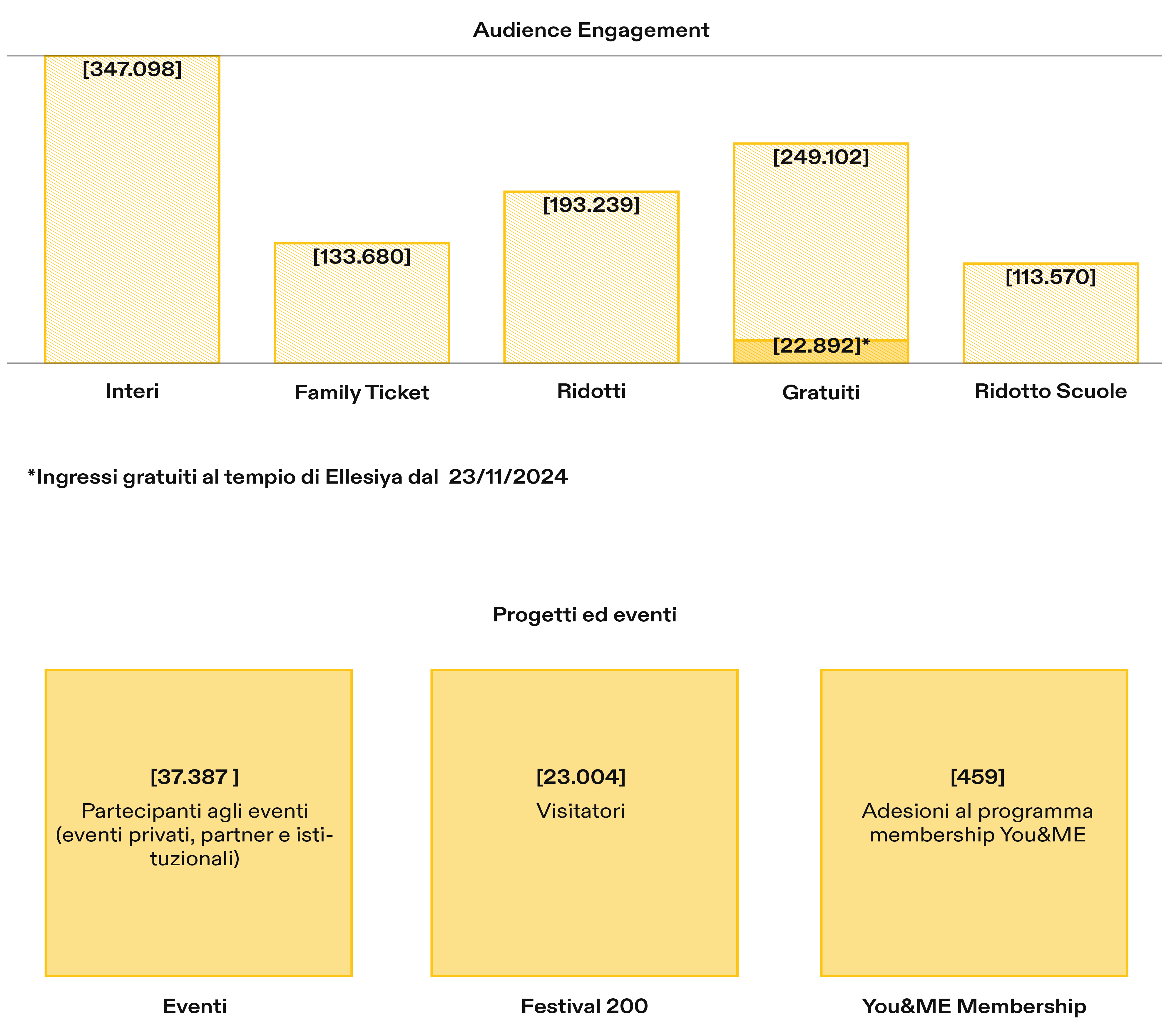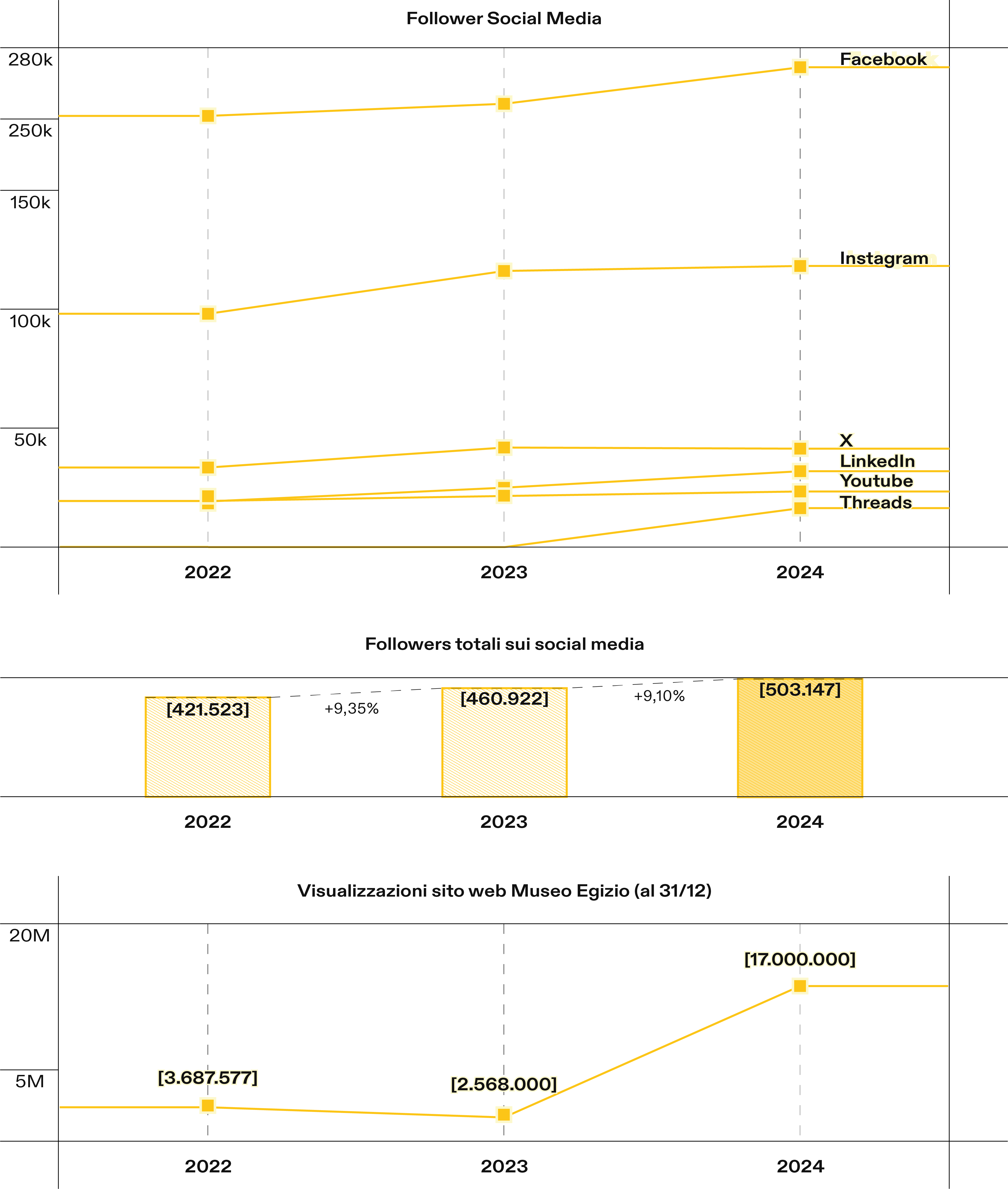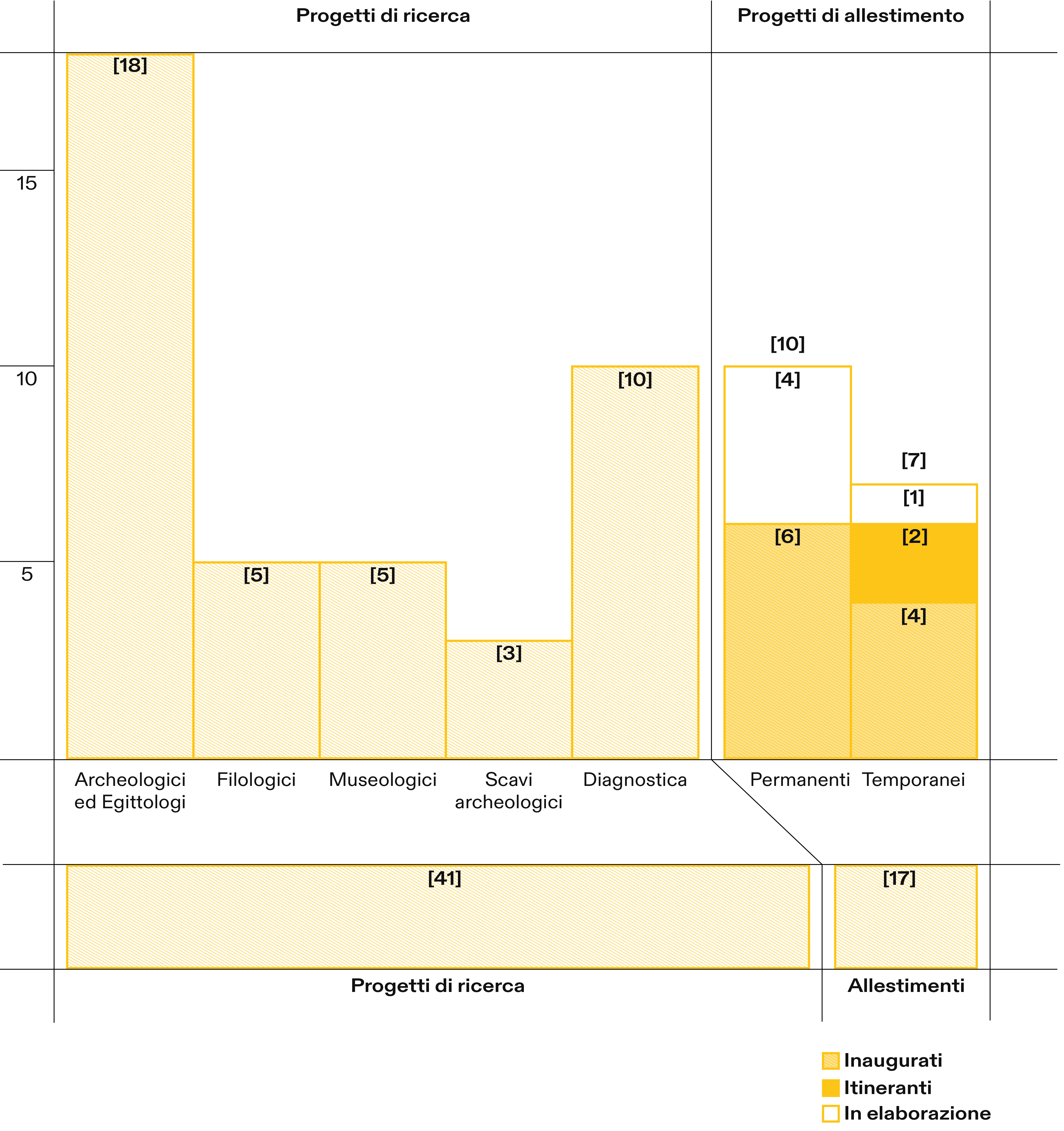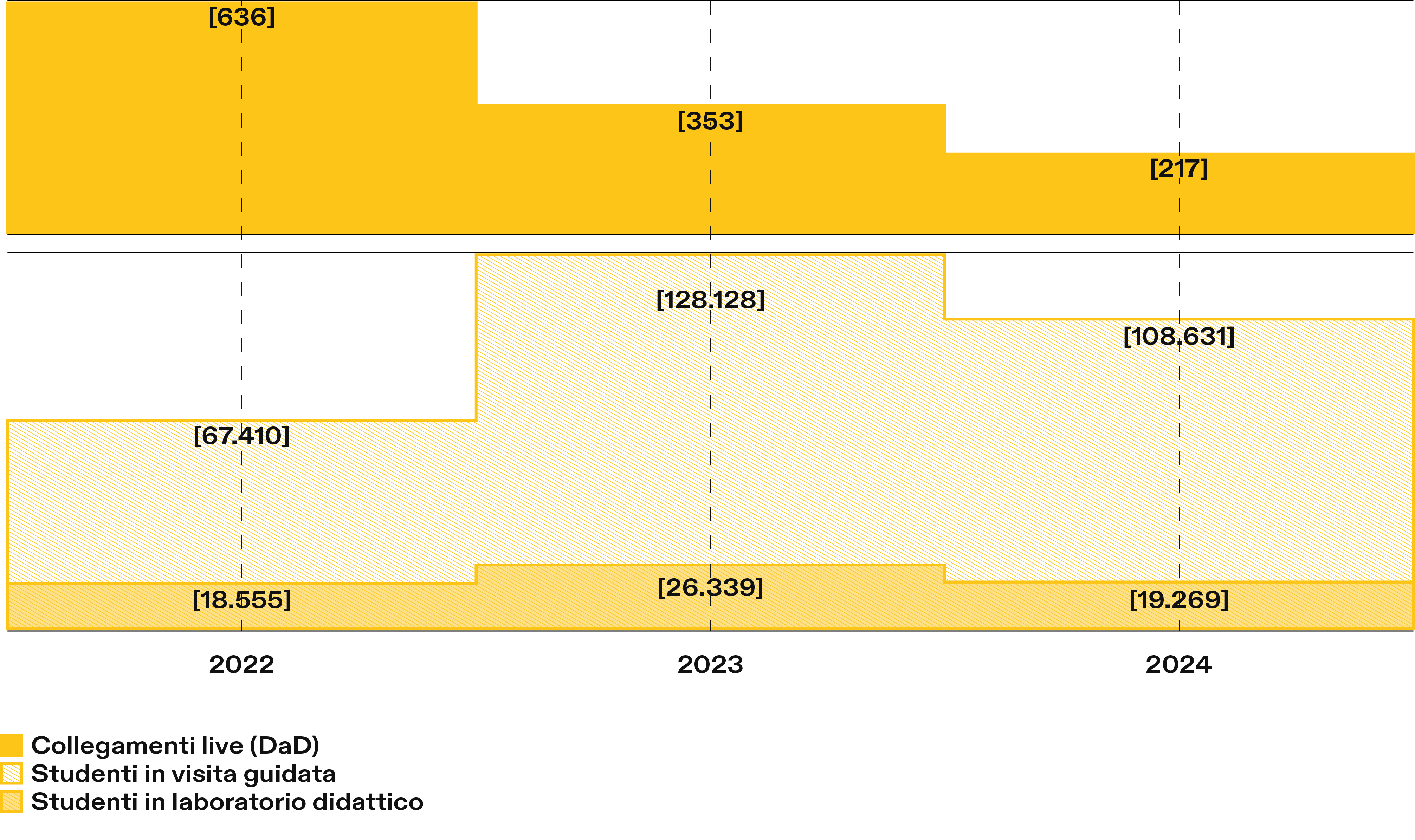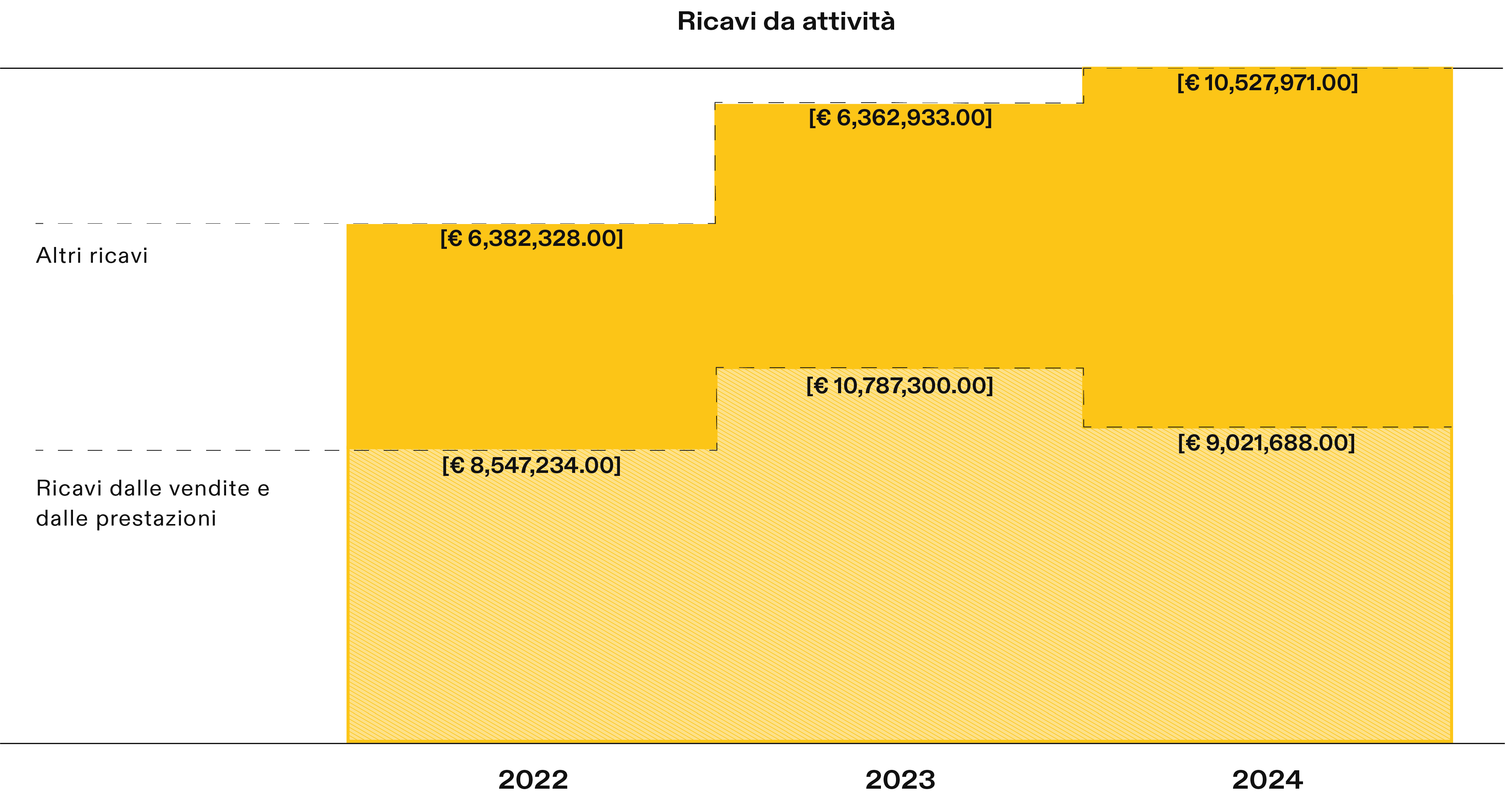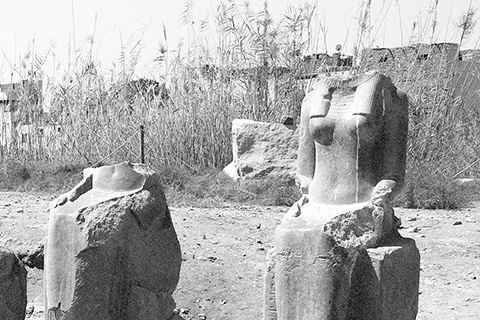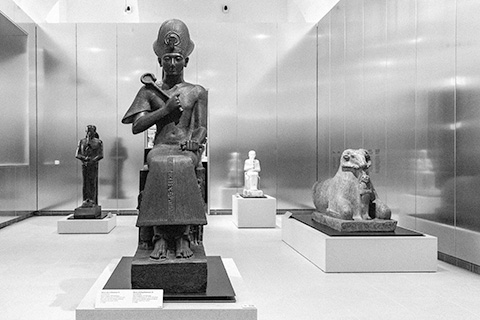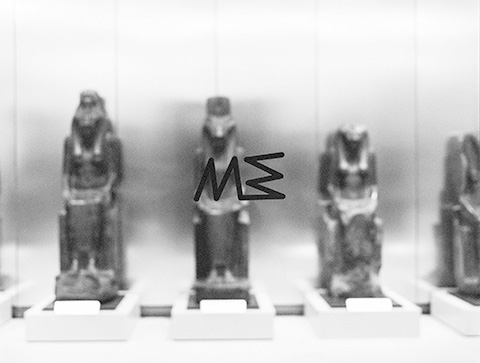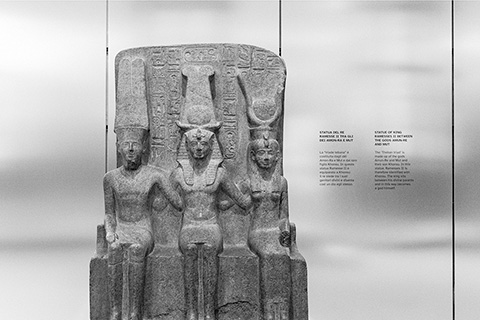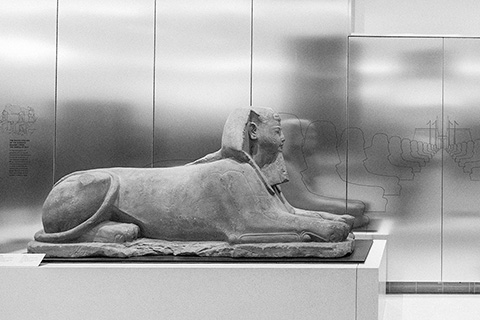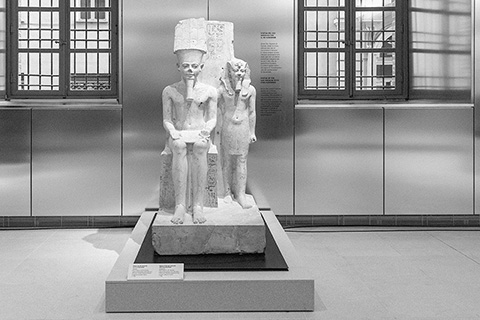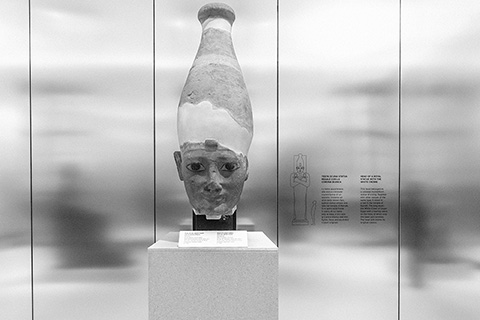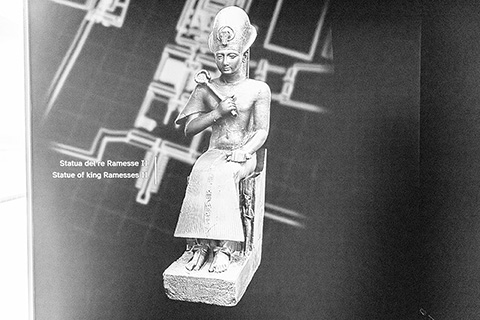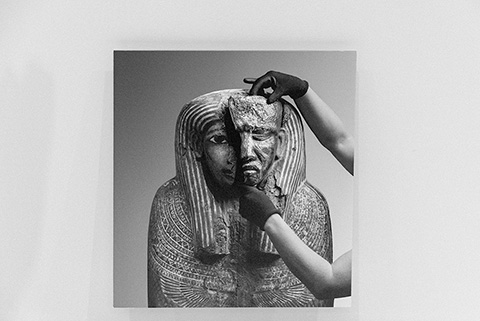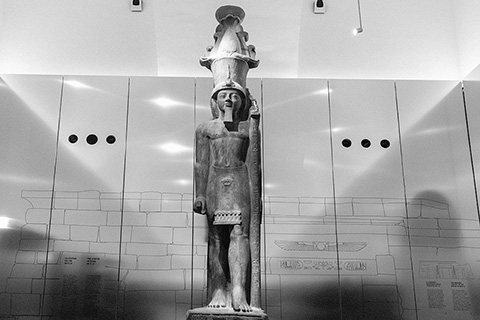Interpretazione, accessibilità, condivisione sono parole chiave introdotte nella definizione di museo proposta da ICOM nel 2022, anno in cui il Museo Egizio ha assunto una innovativa posizione, quasi un manifesto, dedicando alle varie attività di mediazione con i pubblici un dipartimento specifico.
In occasione del Bicentenario, il Museo Egizio ha celebrato i suoi primi 200 anni di storia con un ricco programma di iniziative, eventi e trasformazioni sotto il cappello del claim “200 anni di Museo Egizio. La memoria è il nostro futuro”. La narrazione delle celebrazioni ha adottato un approccio partecipativo, coinvolgendo non solo ricercatori e ricercatrici, ma anche divulgatori esterni, scuole e sostenitori, attraverso contenuti digitali, eventi online e iniziative in presenza. Tra le attività più significative, l’Agenda Culturale, che per un anno intero ha accompagnato le celebrazioni del Bicentenario del Museo, culminata con il Festival 200: tre giorni di eventi gratuiti che hanno attirato oltre 23.000 persone, contribuendo a rafforzare il legame tra il Museo e la città di Torino. L’affluenza dei visitatori si è mantenuta elevata, superando il milione di ingressi, per il secondo anno consecutivo, nonostante il mese di chiusura per permettere i lavori di riallestimento delle sale e del palazzo. Questo dato è stato sostenuto anche da un’intensa attività di comunicazione digitale e dalla presenza sui social media, che hanno amplificato digitalmente la portata delle iniziative, raccontando tappa dopo tappa le inaugurazioni di cui è stato costellato l’intero anno. Il Museo ha inoltre rafforzato la sua attenzione alla comunità in cui è inserito, portando avanti un ampio progetto di accessibilità e promuovendo attività rivolte a famiglie, bambini e persone con disabilità. La varietà di eventi, conferenze e convegni, insieme alle collaborazioni con enti e partner del territorio, ha consolidato il ruolo del Museo come centro di ricerca, promotore di dialogo culturale. Tutto ciò ha contribuito a mantenere vive le collezioni, rendendole accessibili e stimolanti per un pubblico sempre più vasto e diversificato.
Per le celebrazioni del Bicentenario il Museo ha ricevuto il riconoscimento dell’Alto Patronato del Presidente della Repubblica e ciò ha contribuito a lanciare una nuova programmazione istituzionale: l’Agenda Culturale del Museo. Si tratta di una serie di appuntamenti mensili gratuiti, con una programmazione ricca e diversificata. Ogni mese è stato caratterizzato da un tema, dando vita a un palinsesto dinamico che ha consolidato la presenza del Museo come un importante punto di riferimento culturale per la città. Alcuni degli eventi si sono infatti svolti in luoghi significativi della città, come il Cinema Romano in Galleria Subalpina, le Gallerie d’Italia, Infini.to Planetario di Torino, anche per fare fronte alle contingenze determinate dagli imponenti lavori di ristrutturazione. Questo ha permesso al Museo Egizio di entrare ancora di più in sintonia con la città e di rafforzare il legame con la comunità e con nuovi pubblici. Il palinsesto dell’Agenda Culturale del 2024 si è aperto con la promozione del Bicentenario del Museo durante il Concerto di Capodanno in piazza San Carlo promosso dalla Città di Torino. Il concerto, che ha visto la partecipazione di circa 10.000 persone, ha previsto un intervento del direttore del Museo Egizio e ha rappresentato il momento di lancio dell’Agenda Culturale.
Il 20 novembre 2024 il Museo Egizio ha dato avvio alle celebrazioni dei 200 anni dalla sua fondazione alla presenza del Presidente della Repubblica, Sergio Mattarella. Dopo la visita ai nuovi allestimenti con il Direttore e la Presidente del Museo Egizio - trasmessa in diretta su Rai 1 - il Presidente della Repubblica ha partecipato alla cerimonia di saluti ufficiali dove ha incontrato le autorità italiane ed egiziane, tra cui il Ministro della Cultura, Alessandro Giuli e il Ministro egiziano Sherif Fathy. In seguito alla presentazione ufficiale alle più alte cariche dello Stato è stato organizzato un punto stampa per raccontare il contributo dato dalle realtà che hanno abbracciato i progetti legati al Bicentenario del Museo e sono state organizzate delle preview dei nuovi spazi espositivi. I festeggiamenti per il Bicentenario sono entrati nel vivo con il Festival 200: tre giorni di ingresso gratuito per mostrare e raccontare i duecento anni del Museo e i nuovi allestimenti al grande pubblico con un ricco programma di appuntamenti tra laboratori, visite guidate, approfondimenti con i curatori e le curatrici del Museo Egizio. Il Festival è iniziato con l’apertura straordinaria fino a mezzanotte che ha permesso ai visitatori di accedere gratuitamente alle sale del Museo, concludendo la serata con lo spettacolo di danza “Safe from the Sleep” curate da Marco Pelle e Antonella Albano in Galleria dei Re, e si è concluso il 22 novembre con due momenti distintivi: la Cerimonia di presentazione del francobollo celebrativo del Bicentenario, un momento solenne in Sala Conferenze, alla presenza dell’Onorevole Federico Mollicone, e l’ultimo appuntamento del ciclo di incontri “What is a Museum?” tenuto dal Direttore del museo del Cairo, Ali Abdelhalim Ali, in dialogo con Christian Greco, che ha offerto una riflessione sul ruolo dei musei nel mondo contemporaneo. Il Festival ha avuto un’affluenza complessiva di 23.004 persone (20-21-22 novembre 2024), un dato importante e una riprova del grande interesse verso l’istituzione e la sua trasformazione.
Il Bicentenario è stato raccontato attraverso le diverse inaugurazioni e iniziative svolte durante l’anno, illustrando le trasformazioni architettoniche e allestitive del Museo, spiegandone le ragioni anche attraverso contenuti digitali, pillole video informative e altre curiosità sulla collezione. Un approccio partecipativo è stato al centro di questa narrazione, affidata non solo ai ricercatori, alle ricercatrici e più in generale allo staff del Museo Egizio ma anche allo sguardo di figure esterne in grado di raccontare il Museo in modo laterale e nuovo. Divulgatori scientifici, con stili e background diversi, hanno contribuito ad amplificare la programmazione e i nuovi allestimenti del Museo realizzati per il Bicentenario. Durante il Festival 200, è stato inoltre avviato un progetto speciale (PCTO) in collaborazione con il Liceo d’Azeglio, che ha coinvolto studenti e studentesse, i quali hanno partecipato alle attività del Festival e, attraverso un canale TikTok di supporter dedicato, hanno condiviso e raccontato la propria visione sui 200 anni del Museo e sulle iniziative delle celebrazioni. L’approccio partecipativo è stato anche il filo conduttore della campagna di adesione al programma membership You&ME, che ha raccolto in un video corale le testimonianze di member e dello staff museale, per trasmettere il punto di vista specifico di chi ha scelto di sostenere il Museo e la sua trasformazione.
